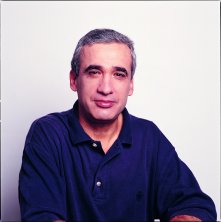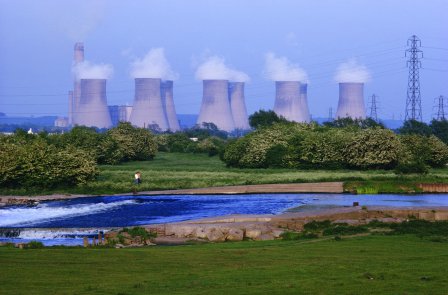It is time for the world to take alternative fuel sources seriously, say Weizmann Institute scientists. Energy consumption—both in the Western world and especially in newly industrialized countries—is growing so fast that carbon dioxide (CO2) and other combustion-related particles in the air are affecting our weather and increasing health risks. Add rising oil prices and the fact that easily recoverable oil supplies are dwindling, and the stage is set for a number of undesirable scenarios.

“Within five to ten years, we must provide a large-scale practical approach for renewable energy production, storage, and transport. Within 20 to 25 years, we must develop a non-proliferating source of nuclear energy using abundant material, generating low-hazard byproducts,” says Prof. Jacob Karni of the Weizmann Institute’s Department of Environmental Science and Energy Research.
Karni and his team feel the renewable energy development phase of this goal can be achieved largely by using energy from the sun as an alternative to burning fossil fuels such as oil, gas, and coal. Solar energy is the only renewable resource available in large enough quantities to replace a significant portion of the energy now supplied by fossil fuels, and therefore must be exploited worldwide on a large scale.
“Sufficient solar energy is available in many countries [and] on all continents except Antarctica. It can be turned into electricity, heat, or clean fuels that can be used or stored and transported,” says Prof. Karni. “The effort takes a multidisciplinary group, and the Weizmann Institute has the capability to bring the necessary disciplines together.”
Weizmann’s solar research laboratory, established in 1987, is the only such facility in the world located on an academic campus. The laboratory has six solar workstations, each capable of housing between one and three experiments. The results of one extensive project led to the development of a solar-thermal demonstration plant, which was installed in Nanjing, China, and began operation in November 2005. The plant implements state-of-the-art technology to convert sunlight to electricity.
The Weizmann Institute has taken a leading role in the development of practical alternative energy technologies. Regretfully, this effort is severely hindered by shrinking government support for alternative energy research.
“Research is defocused and underfunded. The problem cannot be solved this way. It is clear that we simply cannot rely on government funding,” explains Prof. Karni. “Conventional government policies say that fossil fuel consumption cannot be reduced in the next 25 years, so we need to increase efficiency. Driving hybrid cars, increasing production efficiency, reducing waste in the consumption of fuels and electricity, implementing stricter regulations, and using solar panels can help alleviate the problem to some extent, but they will not solve it,” he emphasized.
Western governments have taken baby steps to encourage alternative energy sources, but Prof. Karni feels their efforts are a “talk tough, do little” approach.

“The Kyoto Protocol calls for a reduction in CO2 emissions by a minimum of 5 percent below 1990 levels by 2012. This will be impossible to accomplish globally when more than half the world is expected to use 2 to 5 times more energy from fossil fuels without emission restrictions,” Prof. Karni says. “We might be able to develop enough nuclear energy to provide 20 percent to 30 percent of the world’s energy requirements by 2030 to 2040, but it is not likely to happen unless we develop and implement methods to better deal with the storage of spent nuclear fuel, proliferation, safety, and security issues,” he explains.
Fossil fuels are a concern not only because recovering them is becoming increasingly costly and polluting, but because burning them produces carbon emissions. 1.5 billion people live in countries where the consumption of electricity tripled from 1990 to 2003. Another 2 billion live in countries where electric consumption doubled during the same time period. Carbon emissions in these fast-growing countries are rising quickly.
“Their governments and industries are not concerned about pollution, because they are in a losing race to supply the need of fast-expanding economies, but the world may pay a terrible price,” says Prof. Karni. He continues: “There is increasingly convincing evidence that warming from fossil fuel—the greenhouse effect—has already become a dominant factor in climate change. The mean surface temperature of the earth is higher today than at any time in the last millennium, causing large-scale melting of arctic ice. Since 1979, the size of the summer polar ice cap near the North Pole has shrunk more than 20 percent. The world gets rid of heat through storms, which have increased in number and intensified in strength.”
Solar energy can solve the world’s immediate and future energy needs, but the development of this resource requires funding.
“The cheapest level is the initial conceptual-level research, but no one wants to fund it,” says Prof. Karni. “The second development level is demonstration, like we have in China, then commercialization. It’s all within our grasp.”
Prof. Jacob Karni's research is supported by the Sussman Family Center for the Study of Environmental Sciences; the Angel Faivovich Foundation for Ecological Research; the Solomon R. and Rebecca D. Baker Foundation; the Abraham and Sonia Rochlin Foundation; the Arnold Ziff Charitable Foundation; Mr. and Mrs. Larry Taylor, Los Angeles, CA; and Dr. and Mrs. Robert Zaitlin, Los Angeles, CA. The Weizmann Institute of Science in Rehovot, Israel, is one of the world's foremost centers of scientific research and graduate study. The American Committee for the Weizmann Institute of Science is a community of dedicated people who share a common vision in support of the Institute. The generous assistance the Institute receives from individuals, foundations, and corporations is vital for its future. Committee members show their devotion to the advancement of the Institute's goals by becoming partners in the search for answers to the most difficult challenges facing humanity.
